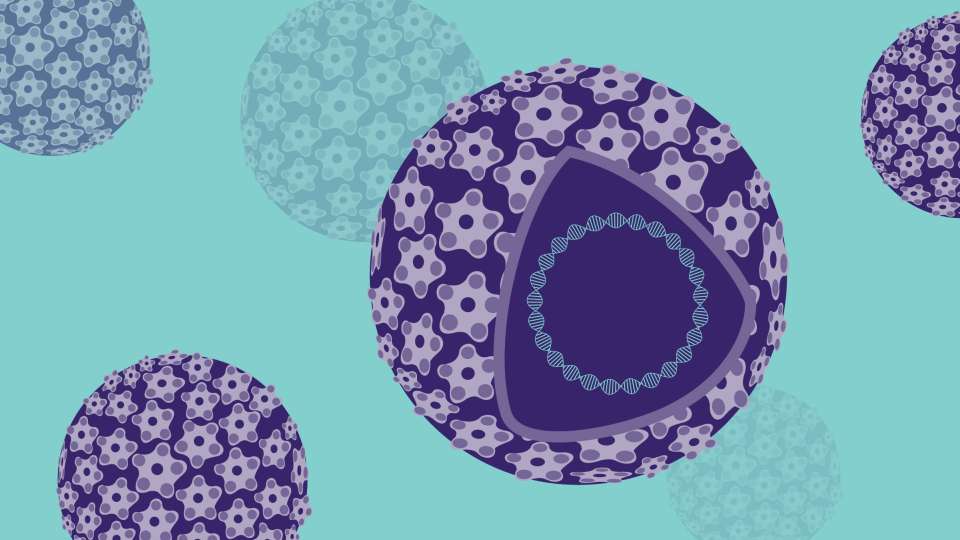
You’ve probably heard that human papillomavirus (HPV), a sexually transmitted infection (STI) can, in rare cases, cause cancer. But what is HPV, exactly? Did you know that there’s a vaccine that can prevent it? Or that you can get some types of HPV without having sex?
Dr. Anna Wald, director of the UW Virology Research Clinic at Harborview Medical Center, shares some little-known truths about HPV.
1. There are many types of HPV and not all cause cancer
HPV isn’t just one type of virus — it’s actually more than 200 types that are related. For example, the type of HPV that can cause genital warts differs from the kind that can cause cancer.
Out of those 200 types, there are about 14 that are considered high risk for causing cancer.
According to the Centers for Disease Control and Prevention (CDC), more than 37,000 cases of cancer are caused each year in the United States due to HPV infection. However, in 9 out of 10 people who get HPV the infection will clear on its own, making it much less likely to cause cancer.
2. You are likely to get at least one type of HPV in your lifetime
HPV is the most common STI in the United States and most sexually-active people will get at least one type of HPV in their lifetime.
3. HPV usually doesn’t cause symptoms
Aside from the types of HPV that cause genital warts, most HPV infections won’t cause symptoms, meaning people who have HPV usually don’t know they have it.
4. High-risk HPV causes not only cervical cancer but also other cancers
People of all genders — not just women — can develop cancer from HPV. In fact, CDC data shows that, in the United States, 4 out of 10 cases of HPV-caused cancer occur in men.
High-risk HPV types lead to cancers not only of the cervix but also of the vulva, vagina, penis, anus and the back of the throat, including the base of the tongue and tonsils.
Recent research has shown that people living with HIV, particularly men who have sex with men, are at higher risk for developing HPV-caused anal cancer but that early treatment is important to produce better outcomes.
5. Most HPV infections — even high-risk ones — clear on their own without treatment
“Most people acquire HPV shortly after becoming sexually active but have no symptoms," says Wald. Most people clear the infection—including the high-risk types—within two years without ever knowing they had it.
A small proportion of women have an infection that becomes persistent. “It is in these women that you worry about cervical cancer,” says Wald.
6. A single HPV vaccine dose could still be beneficial in some cases
The CDC currently recommends that teens under age 15 get two doses of the vaccine at least six months apart, and that people between ages 15 and 26 and people who are immunocompromised get three doses.
However, new research is showing that a single dose may be just as effective.
Even if U.S. guidelines aren’t changed, showing that a single dose helps protect against HPV is helpful for people living in countries without as many resources, Wald explains.
Globally, HPV vaccination decreased between 2019 and 2021, putting more people at risk for HPV and related cancers. In December 2022, the World Health Organization (WHO) updated their HPV vaccination guidelines to recommend single doses to improve access to the vaccine, especially for girls aged 9-14.
All children can get vaccinated for HPV, typically starting around age 11. The CDC recommends that everyone under age 26 get vaccinated, and some people up to age 45 can get vaccinated if they weren’t as children, though the vaccine is more effective if given before someone becomes sexually active.
7. You can become infected with HPV without having intercourse
HPV is not transmitted through bodily fluids such as semen or saliva, but through skin-to-skin contact. This happens most easily through sexual contact, such as vaginal, anal and oral sex. HPV can enter the body through any mucous membrane, such as mouths, lips, anus and parts of the genitals.
A condom, when used properly, does reduce the risk of HPV transmission. “It is not 100 percent but it does have some effect. This is because the HPV virus is found mostly in the penile skin so if you cover the shaft of the penis, then you are making some progress. But vaccines are much more effective, so certainly vaccinating people is the more effective way to prevent infection,” says Wald.
8. Partners of uncircumcised men have a higher risk of cervical cancer than partners of men who have been circumcised
There is historical data that shows Jewish and Muslim women are less likely to get cervical cancer.
“People thought that this fact must be related to male partner circumcision so they studied it,” says Wald. “They found that indeed circumcision reduces the risk of HPV in men, and therefore also the risk of HPV transmission from men to women.”
9. There is screening for cervical cancer caused by HPV, but not for the other cancers caused by the virus
The American Cancer Society recommends that women and people assigned female at birth who are between ages 25 and 65 get screened for HPV every five years.
“Women can at least be screened for cervical cancer,” says Wald, “But for men, there is no screening for anal cancer or the other cancers that might develop from HPV. That is one of the reasons that you should give the HPV vaccine to boys.”
There have been studies showing that oral screening for HPV is possible: one current method is via oral screening during a routine dentist appointment. However, there are no oral tests approved by the Food and Drug Administration (FDA), and the CDC does not currently recommend routine screening for oral HPV in men — even though cases of HPV-related cancer have increased among men in recent years.
10. Getting cervical cancer from HPV increases risk for vulvar cancer
The same HPV types that are linked to cervical cancer are also linked to cancer of the vulva. Therefore, women and people assigned female at birth who are infected with HPV or have a history of cervical dysplasia have a higher risk of developing vulvar cancer, too.

 Healthy ideas for your inbox
Healthy ideas for your inbox





